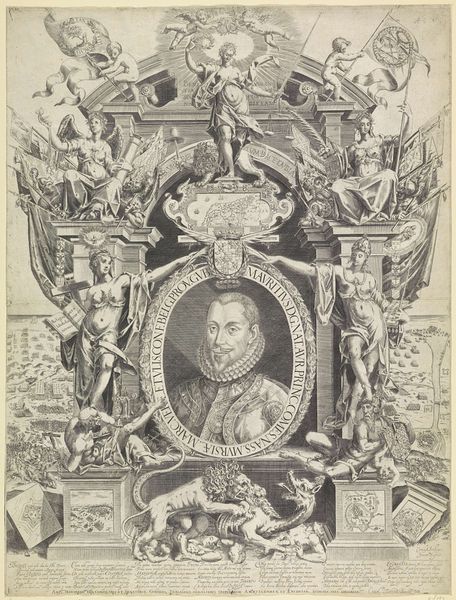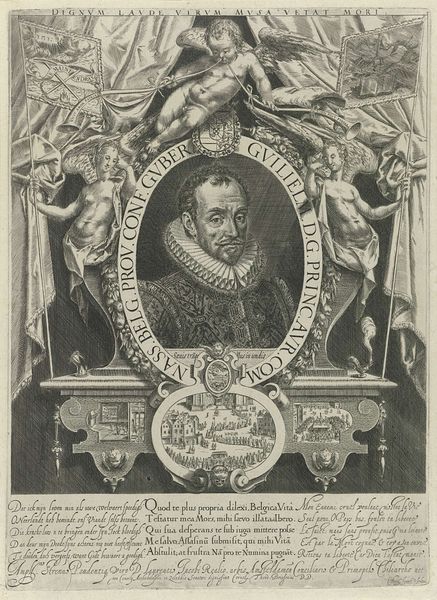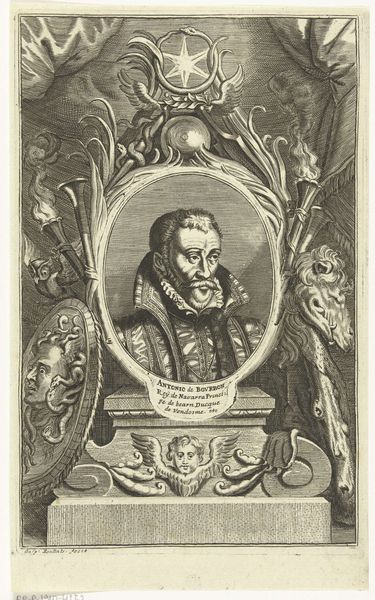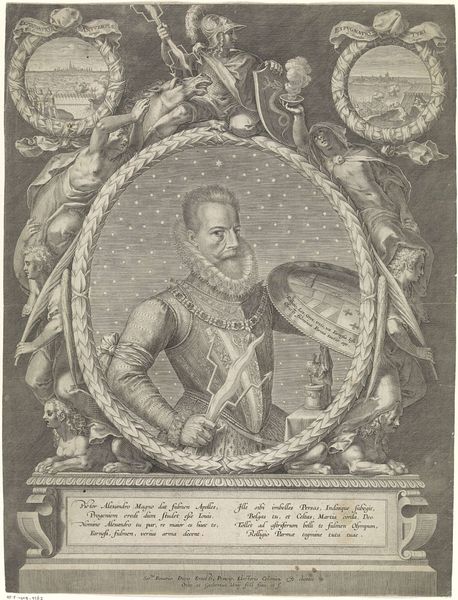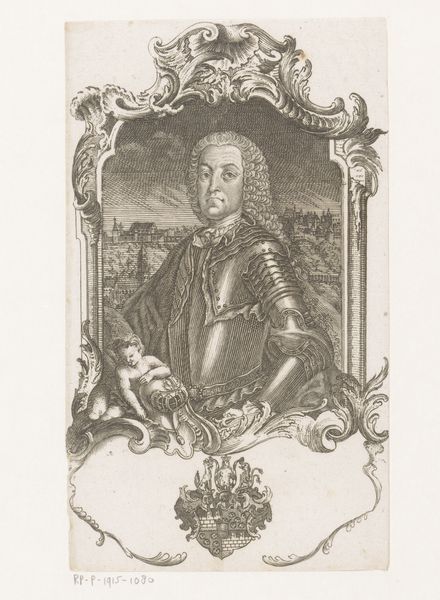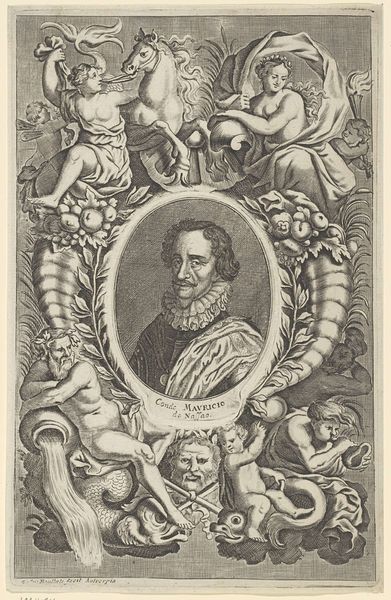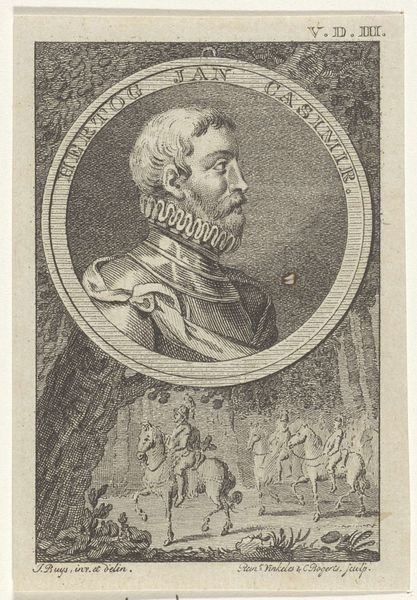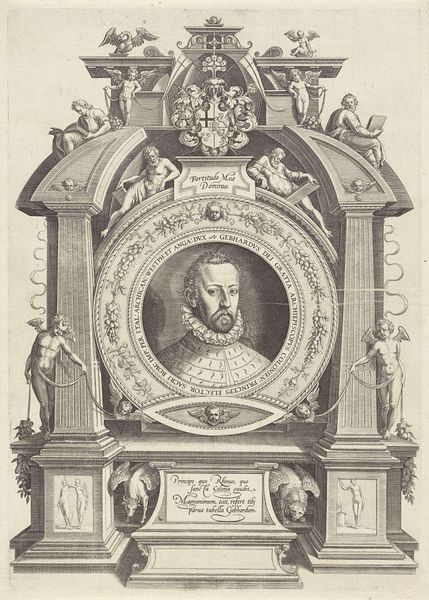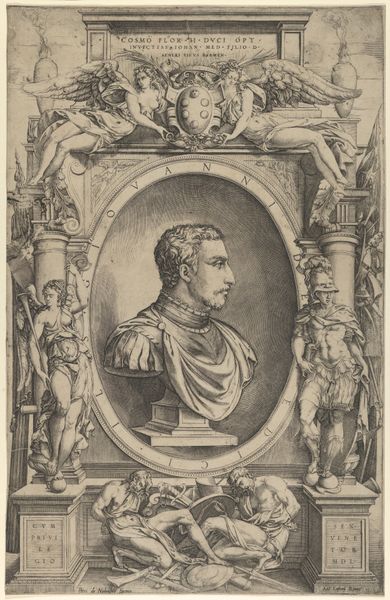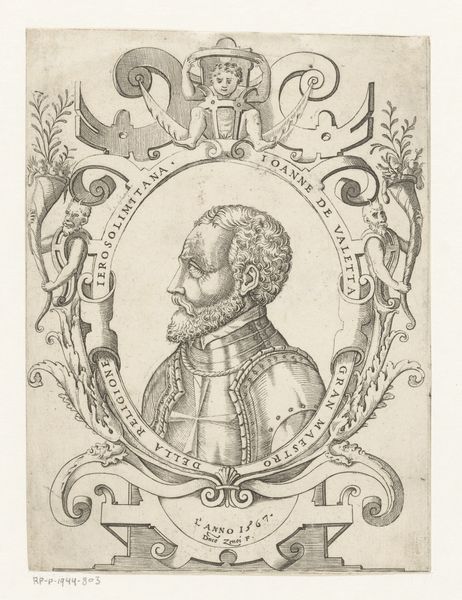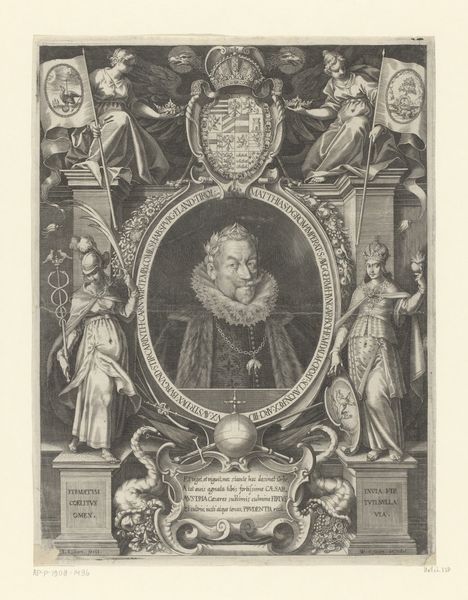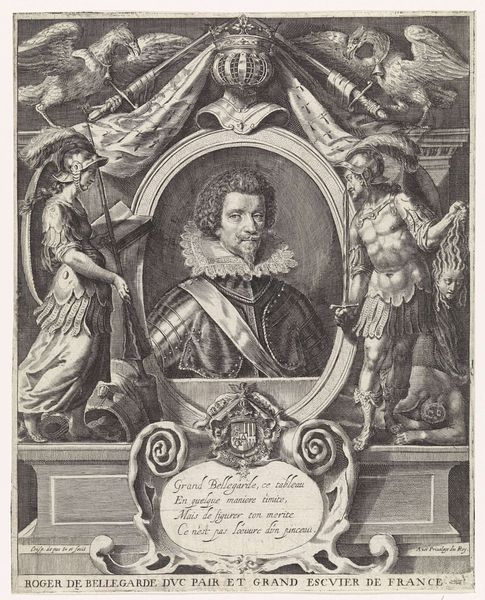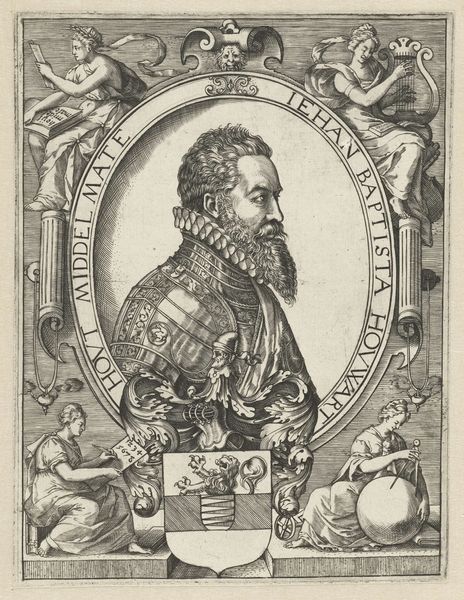
print, engraving
#
portrait
#
baroque
# print
#
old engraving style
#
form
#
line
#
history-painting
#
engraving
Dimensions: height 287 mm, width 211 mm
Copyright: Rijks Museum: Open Domain
Editor: Here we have "Portret van Maurits, prins van Oranje," a print dating somewhere between 1597 and 1634, made by Cornelis Dircksz. Boissens. The detail is incredible. What strikes me most is how much information is packed into a single image – it feels like both a portrait and a historical document. How do you see this work? Curator: You're right, it is packed! As a historian, I'm immediately drawn to how this portrait functions within the broader political landscape. Prints like these were crucial for disseminating images of power and solidifying public opinion, particularly during the Dutch Revolt. Notice the Latin text, the heraldry, the allegorical figures—it's all carefully constructed to present Maurice as a triumphant leader and a protector of the Dutch Republic. Who do you think was the audience for something like this, and how would they have received it? Editor: I guess the text suggests it's geared towards a learned audience, but the image itself… I think even someone who couldn't read Latin would understand the message of strength and stability. The cherubs are pretty blatant symbolism, I mean, they support Maurice's achievements. Curator: Precisely! The visual language transcends literacy. Think about the role of patronage here, too. This wasn't just about accurate representation, but also about projecting a carefully managed image of power. The details, like the armor and the decorations, all reinforce his authority. Is it an accurate representation or idealized propaganda? Editor: I see your point. So it’s less about capturing the individual, and more about building a legend, right? What about that panel at the bottom? It seems like some battle scene. Curator: Good observation! Those scenes would depict military victories, anchoring his image in the context of the Dutch struggle for independence. The print served as a form of early mass media, reinforcing Maurice's image. Editor: It’s interesting to consider how an image could shape perceptions and bolster a political cause. Now I have a deeper insight into it as a historical artifact, not just a pretty print. Curator: And that's the key. By understanding the socio-political context, we can truly unpack the layers of meaning embedded within the image.
Comments
No comments
Be the first to comment and join the conversation on the ultimate creative platform.
